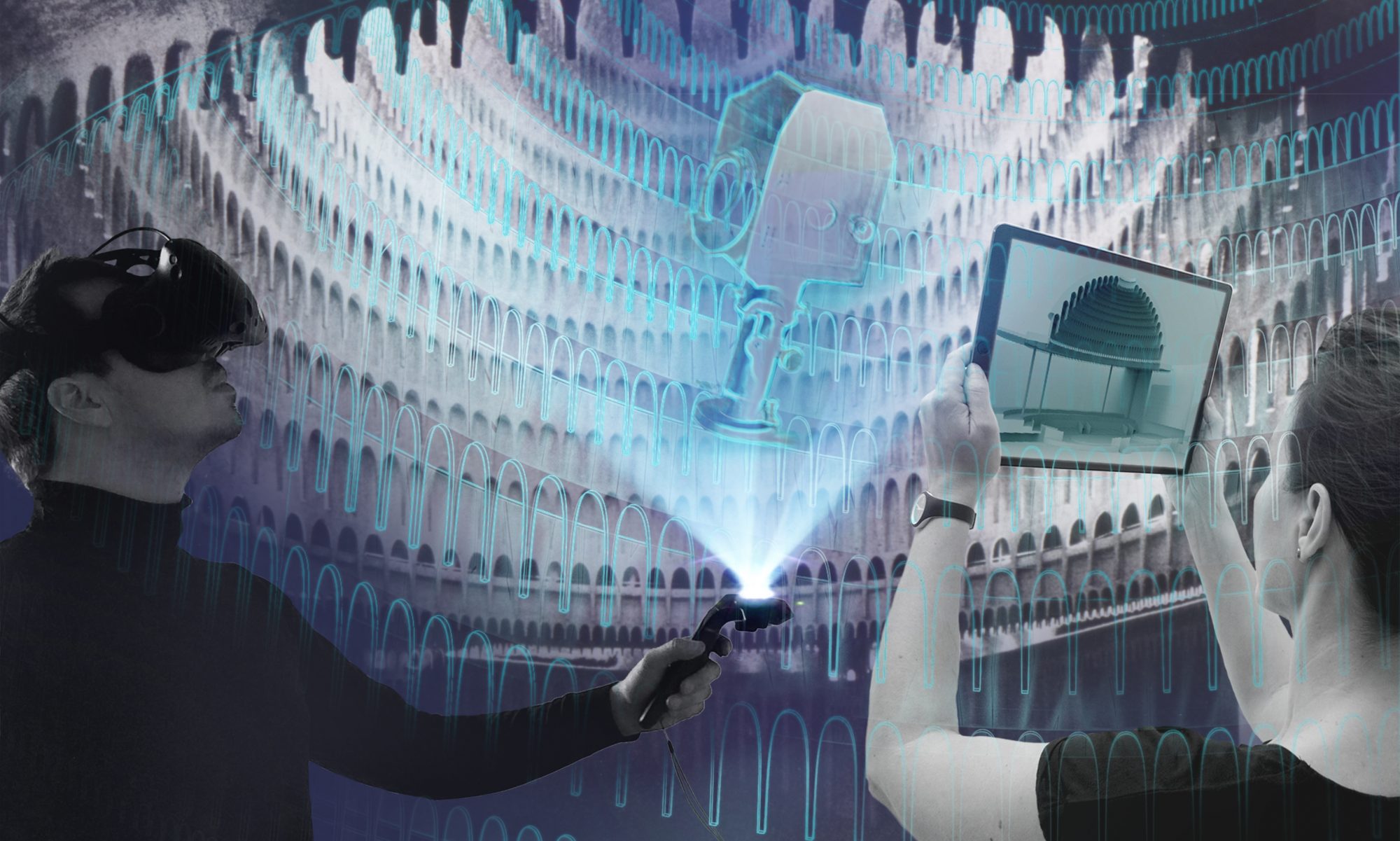The virtual learning space “Bending beam” makes it possible to experience the theoretical, often abstract teaching content of technical mechanics using objects typical of the theater and event world.
The aim of the VR prototype is to understand force influences and mechanical loads in their complex interplay and to learn the beam theory of engineering mechanics in an easily understandable and intuitive way: The virtual learning space simulates a spacious exhibition hall with a practice situation consisting of a tie rod / beam and a range of technical equipment (spotlights, loudspeakers, etc.).
In three levels, each with different tasks and levels of difficulty, load variables and force curves can now be tested.
Level 1 = Predict courses: Here, the course of the bending moment and the shear force of a loaded beam is to be predicted. For this purpose, “+” or “-” must be moved into the surfaces of the corresponding section.
Level 2 = Reconstruct courses: In this level, the task is opposite, because the courses of bending moment and shear force are given. The load is now to be reconstructed with technical equipment in such a way that it corresponds to the specified curves.
Level 3 = Loading the supports: The aim of this level is to achieve a specified load on the two supports (motor chain hoist) of the beam. The correct type and number of technical equipment must be attached to the beam.
Because the tasks are based on random variables that are readjusted in each run, there are no identical repetitions and the levels can in principle be processed infinitely often. The real-time calculation allows an immediate feedback, which allows an exact conclusion of the cause-effect-principle. The prototype developed is intended as an accompanying tool for theoretical teaching. Thereby, the application possibilities are manifold, as learning can be done alone as well as with supervision or in group work.
Students: Robin Klein, Jonas Krapf, Samuel Vocke
The prototype was created in the summer semester of 2021 under the direction of Lea Schorling at the Theater and Event Technology program of the Beuth University of Applied Sciences Berlin in cooperation with digital.DTHG in the research project “Im/material Theatre Spaces”.
More Prototypes:

Cybertheater 2077
The aim of the educational game “Cybertheater 2077: a small click for one person, but a big leap for mankind” is to provide a comprehensive insight into the technical professions, working methods and areas of responsibility of a theater.

Let There Be Light
The VR project “Let There Be Light – Learn how to work with light and color” teaches basic concepts and functions of lighting technology.

Virtual Chain Hoist
digital.DTHG staff member Vincent Kaufmann has converted the theatre laboratory of the Theatre and Event Technology course at Beuth University of Applied Sciences Berlin into the digital realm and created a true-to-scale 3D model of the training room.


